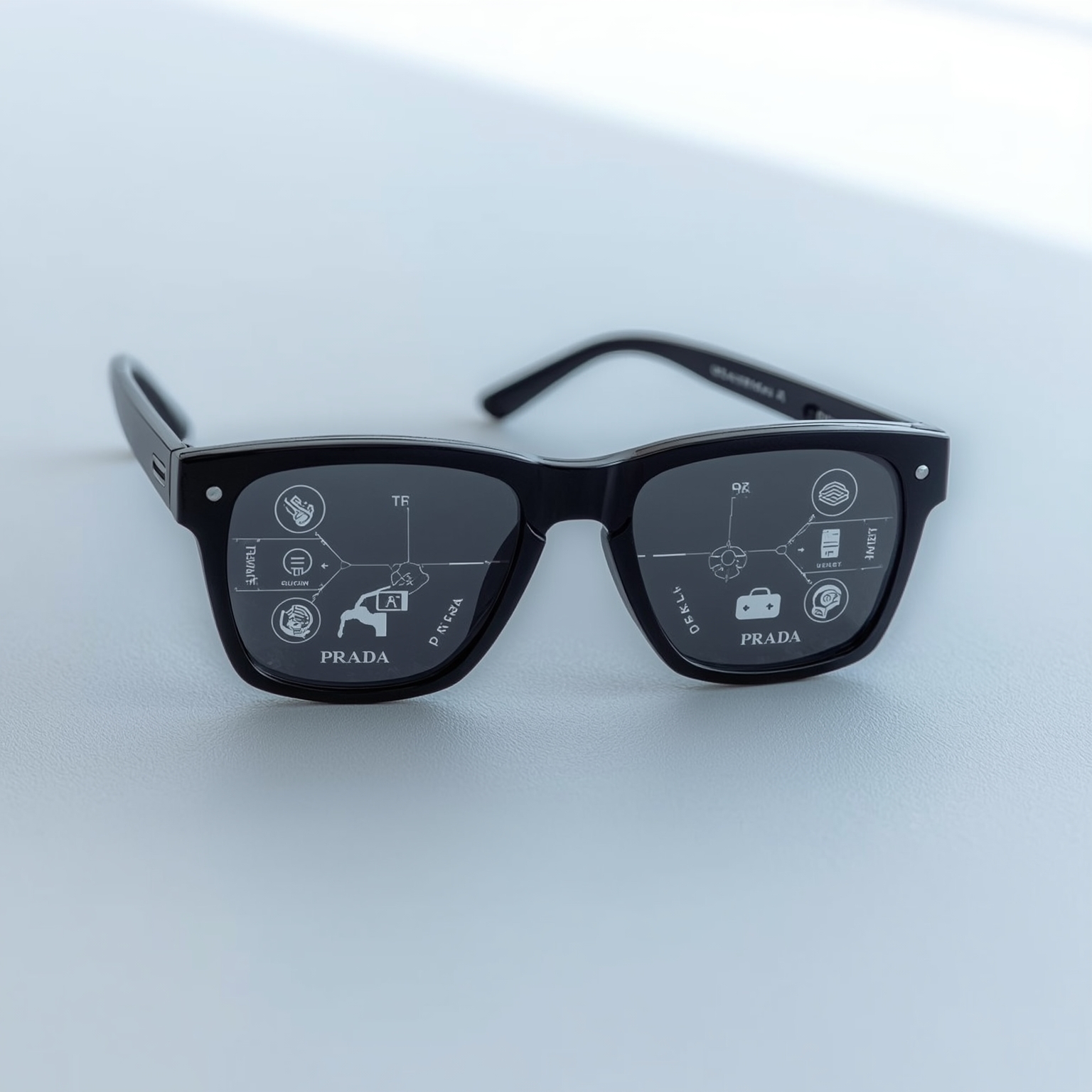Prada’s Linea Rossa eyewear collection provides a compelling example of frames that possess the structural capacity to integrate a considerable amount of advanced technology without compromising their aesthetic appeal. The thick, angular design of many of these models not only offers a distinctive visual presence but also creates ample physical space within the frame to accommodate miniature processors, discreet cameras, enhanced audio components, and even micro-displays—all elements essential for the next stage of wearable innovation.
According to industry speculation and multiple corroborated reports, Meta is preparing to reveal significant advancements at the upcoming Meta Connect conference, scheduled for September 17. Among the most anticipated announcements is the third-generation model of its Ray-Ban audio-only smart glasses—a product line that has already exceeded sales expectations since its debut two years ago. This new version is expected to come with notable refinements such as a more energy-efficient battery for longer use, improved camera performance to keep pace with companion devices like the Meta Oakley collection, and a deeper integration of AI-driven features. Analysts suggest a retail price in the $300–$500 range, positioning the glasses as relatively affordable for consumers seeking discreet, fashionable access to artificial intelligence on the go.
Yet the announcement is not limited to incremental updates. Far more attention is being drawn to the possibility of an entirely new class of augmented reality eyewear that would introduce features beyond the current Ray-Ban line. Reports indicate that these AR glasses could feature a compact color display within one of the lenses—likely designed to deliver notifications, contextual overlays, or lightweight immersive experiences directly into the user’s field of vision. Control is rumored to be facilitated through an advanced neural interface wristband, utilizing subtle hand gestures as inputs, creating a seamless bridge between human intention and digital augmentation. The projected cost of this product falls around $800, reflecting its role as a cutting-edge but forward-facing consumer experiment.
Much of the intrigue surrounding these AR glasses stems from Meta’s reported collaboration with Prada, a prestigious luxury house whose designs, particularly the robust Linea Rossa models, possess frames substantial enough to discreetly house an array of electronics. Prada’s eyewear is distributed under EssilorLuxottica, the same multinational conglomerate that owns globally recognized brands such as Ray-Ban and Oakley. Meta has not only extended its collaborations within this ecosystem but, according to reports, also invested in EssilorLuxottica earlier this year by acquiring a three-percent stake. This strategic move appears to solidify their alliance while limiting opportunities for rival technology companies to form similar partnerships with the world’s leading eyewear manufacturer.
The narrative is further complicated by codenames circulating in the press, such as “Hypernova” and “Celeste,” both associated with Meta’s longer-term AR initiatives. Journalists and analysts have occasionally conflated details between these developmental prototypes and the imminent next-generation Ray-Ban smart glasses, contributing to public confusion. However, it is now becoming clearer that Meta intends to release at least two distinct consumer-facing devices this fall: the updated Ray-Bans and the more ambitious AR glasses with a built-in display.
While these forthcoming AR glasses will not be identical to prototype projects like the “Orion” device—a heavy, costly research model said to exceed $10,000 per unit—they will reportedly incorporate technologies derived from those experiments. One such element is the ‘Ceres’ neural wristband, a pioneering control accessory that interprets neural signals corresponding with micro-hand-movements. Given that a wristband designed exclusively to control glasses may be perceived as limited, many experts now suspect that Meta intends to embed this neural input system into a broader product, such as a smartwatch. Recent leaks hint that Meta could showcase such a watch during the same event, positioning it as a companion device for both their AR glasses and Quest headsets.
This integration makes strategic sense, merging gesture-based control with broader smartwatch functionality, including notifications, connectivity, and fitness tracking. From a branding perspective, Prada’s history of producing luxury timepieces could also play a role, opening possibilities for a Prada-branded smartwatch designed to aesthetically complement the eyewear line. However, crucial questions remain unresolved: Would Meta sell the watch as a mandatory accessory with its glasses, or market it separately? Could it serve as a universal input device for both smart glasses and VR headsets, broadening its consumer appeal? The answers to these uncertainties may define the success of Meta’s wearable ecosystem.
As the countdown to Meta Connect continues, excitement builds not only around technological breakthroughs but also the fusion of style and function. The introduction of Prada into Meta’s wearable ambitions elevates the initiative beyond gadgetry into the sphere of luxury fashion, appealing to consumers who value both innovation and design. On September 17, ZDNET will be present firsthand to evaluate these products, offering in-depth insights and practical impressions into what could mark a transformative step in bringing immersive computing into everyday life.
Sourse: https://www.zdnet.com/article/meta-wears-prada-why-its-next-gen-ar-glasses-may-be-even-more-fashionable-than-ray-bans/



